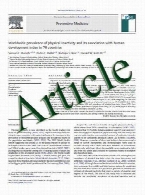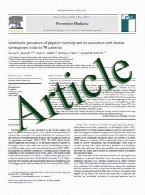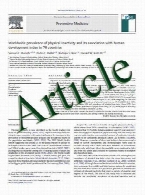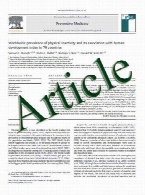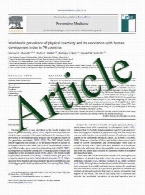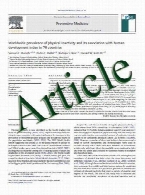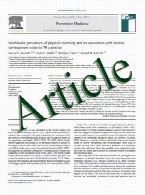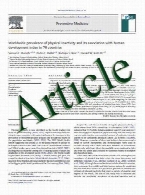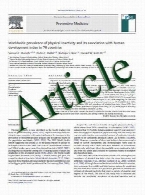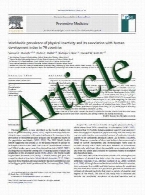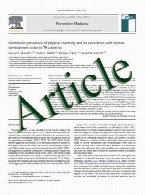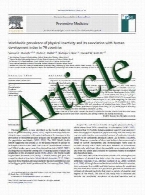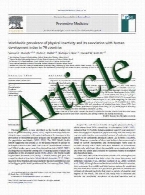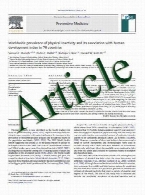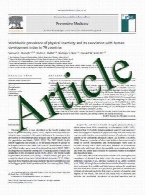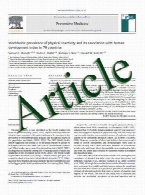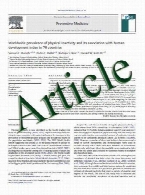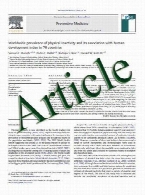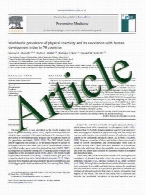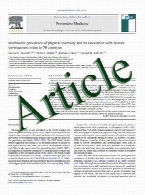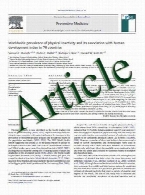

Microvascular disease in childr ...
The incidence of type 1 diabetes (T1D) is increasing worldwide and is associated with a significant burden, mainly related to the development of vas ...
Abdominal pain in a female adol ...
Differential diagnosis of abdominal pain in a female teenager with autosomal dominant polycystic kidney disease (ADPKD) and insulin-dependent diabet ...
Fetal environment, epigenetics, ...
The notion that some adult diseases may have their origins in utero has recently captured scientists’ attention. Some of these effects persist acros ...
A 10-year-old boy with dark uri ...
Mitochondrial fatty acid â-oxidation (FAO) is essential for energy homeostasis in skeletal muscle under conditions that require simultaneous glucose ...
Defining and redefining the nep ...
It has long been appreciated that the mammalian kidney arises via reciprocal interactions between an epithelial ureteric epithelium and the surround ...
Imaging of the urinary tract: t ...
Computed tomography (CT) and magnetic resonance imaging (MRI) are increasingly valuable tools for assessing the urinary tract in adults and children ...
Pathogenesis, diagnosis and man ...
Hyperkalemia is a potentially life-threatening condition in which serum potassium exceeds 5.5 mmol/l. It can be caused by reduced renal excretion, e ...
Renal manifestations of patient ...
MYH9-related disorders are a group of autosomal, dominantly inherited disorders caused by mutations of the MYH9 gene, which encodes the non-muscle m ...
Hypochloremic metabolic alkalos ...
CLD is a rare autosomal recessive disease occurring mainly in people in Arabian countries, Finland, and Poland [1–3]. It is characterized by unremit ...
An unusual case of hyperkalaemi ...
PHA type II is a rare but interesting disorder because of the unusual association of hypertension with hyperkalemia which appears to indicate a disa ...
The impact of pediatric nephrot ...
The objective of our study was to assess the psychologic and economic effects of pediatric nephrotic syndrome (NS) on caregivers. Caregivers of 50 c ...
Semaphorins in kidney developme ...
Semaphorins are guidance proteins that play important roles in organogenesis and disease. Expression of class 3 semaphorins and their receptors is r ...
Age-related stature and linear ...
Children with X-linked hypophosphatemic rickets (XLH) are prone to severe stunting. A multicenter mixed-longitudinal study was conducted to assess a ...
Clinical and laboratory feature ...
OCRL mutations, which are a hallmark of Lowe syndrome, have recently been found in patients with isolated renal phenotype (Dent-2 disease). In this ...
Unilateral localized cystic kid ...
ADPKD is the clinical manifestation of a genetic defect that is typically thought to be a bilateral renal cystic disease of adults, since children a ...
Letter to the Editor regarding ...
This letter is in reference to the article by Di Cesare et al. [1], regarding the association of anorectal malformations (ARMs) and neurospinal dysr ...
HNF1B and PAX2 mutations are a ...
Malformations of the kidney and lower urinary tract are the most frequent cause of end-stage renal disease in children. Mutations in HNF1آ and PAX2 ...
Plasma from a case of recurrent ...
The MYH9 gene encodes a non-muscle myosin IIA heavy chain (NMMHC-IIA) expressed in podocytes. Heterozygous MYH9 mutations cause a set of overlapping ...
Nephrotic syndrome in The Nethe ...
Nephrotic syndrome (NS) is a clinical diagnosis with proteinuria, hypoalbuminaemia and oedema. NS is rare in children, and its incidence in The Neth ...
Glomerular basement membrane co ...
The glomerular basement membrane (GBM) is an especially thick basement membrane that contributes importantly to the kidney’s filtration barrier. The ...
An unusual case of gross hematu ...
Acute renal failure (ARF) is a rare but well-known complication of massive gross hematuria and has been reported in immunoglobulin (Ig)A nephropathy ...
Acute reversible changes of bra ...
Acute poststreptococcal glomerulonephritis (APSGN) is the most common form of postinfectious nephritis worldwide. The relationship between inflammat ...
Four family cases of acute rena ...
Cortinarius poisoning is a rare syndrome that is responsible for a delayed toxic tubulointerstitial nephritis that can induce severe acute or chroni ...
Treatment strategies for Henoch ...
The management of Henoch-Schonlein purpura nephritis (HSPN) is controversial. It has been revealed that some patients develop end-stage renal diseas ...
Alport syndrome and leiomyomato ...
Alport syndrome (ATS) is a nephropathy characterized by the association of progressive hematuric nephritis with ultrastructural changes of the glome ...

